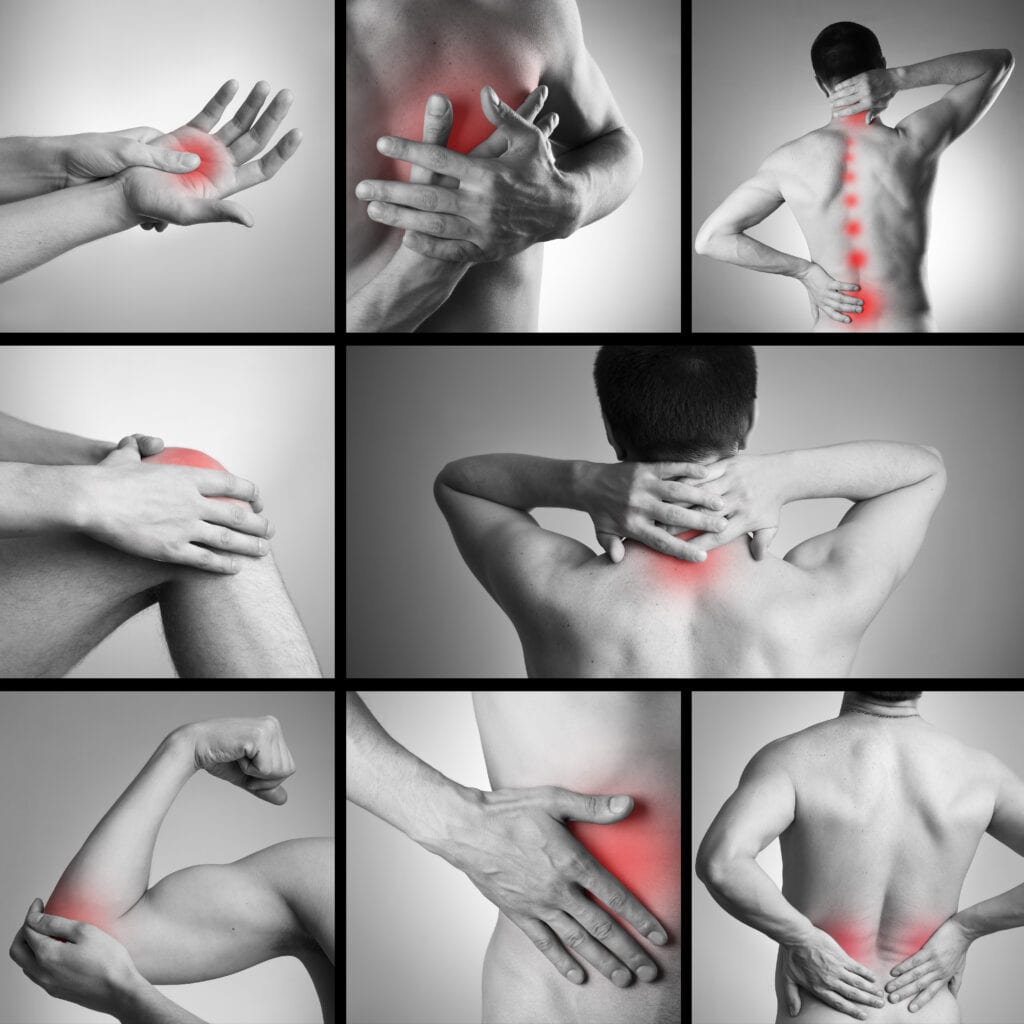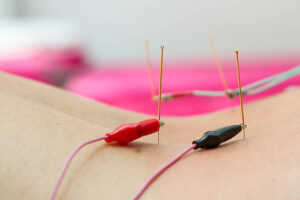
- Trigger point pain
- Myofascial pain syndrome
- Sciatica
- Piriformis Syndrome
- Musculoskeletal pain
- Neck and back pain
- Carpal tunnel syndrome
- Tendonitis
- Plantar fasciitis
- Osteoarthritis
- Headaches
- Sports injuries
- Overuse injuries
- Postural dysfunction
How Dry Needling Works
Dry needling is a form of manual therapy that involves inserting very thin needles into the skin and underlying muscles. This is done in order to stimulate the body’s natural ability to heal itself by releasing endorphins, stimulating blood flow, and releasing tight muscles and trigger points. This can help to reduce pain and inflammation, improve muscle mobility, reduce nerve compression, and improve overall flexibility and range of motion.
Dry needling is a safe and effective treatment for multiple conditions. It is important to note that the effectiveness of dry needling can vary from person to person, so it is important to discuss any concerns with our practitioner before treatment.

Electric Stimulation Dry Needling: A New Way to Target Muscle Pain and Tension at Our Clinic
At our clinic in Scottsdale, we offer a unique dry needling therapy with the use of electric stimulation to help reduce muscle pain, improve range of motion, decrease swelling and inflammation, and improve circulation. Our treatment is designed to target deep muscle tissues, providing relief from pain and discomfort associated with a variety of conditions. Using an electric–assisted needle, our clinic doctor can reach deeper layers of the muscle more effectively, providing more effective and longer lasting relief.
Pain-Free Progress with Dry Needling in Scottsdale
Call or Schedule Online to Get Started
“The author generated this text in part with GPT-3, OpenAI’s large-scale language-generation model. Upon generating draft language, the author reviewed, edited, and revised the language to their own liking and takes ultimate responsibility for the content of this publication.”

